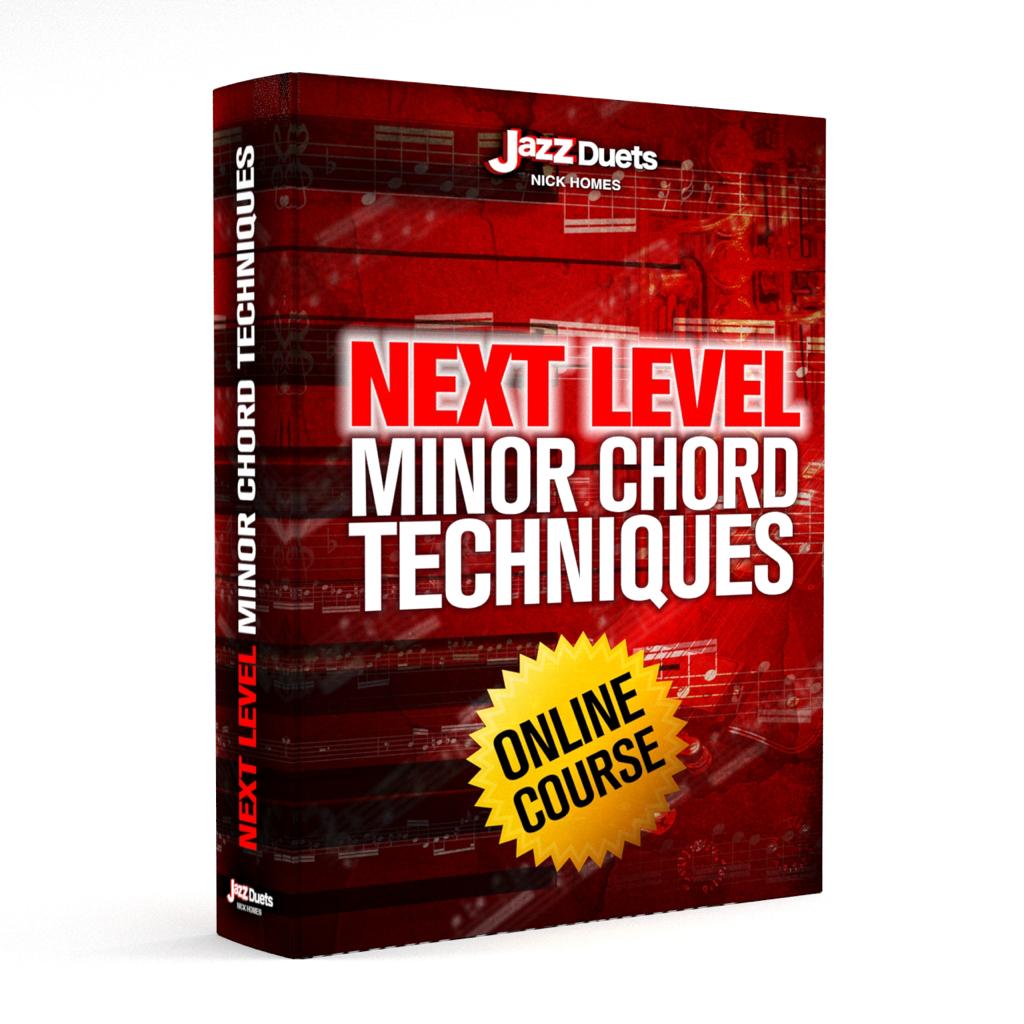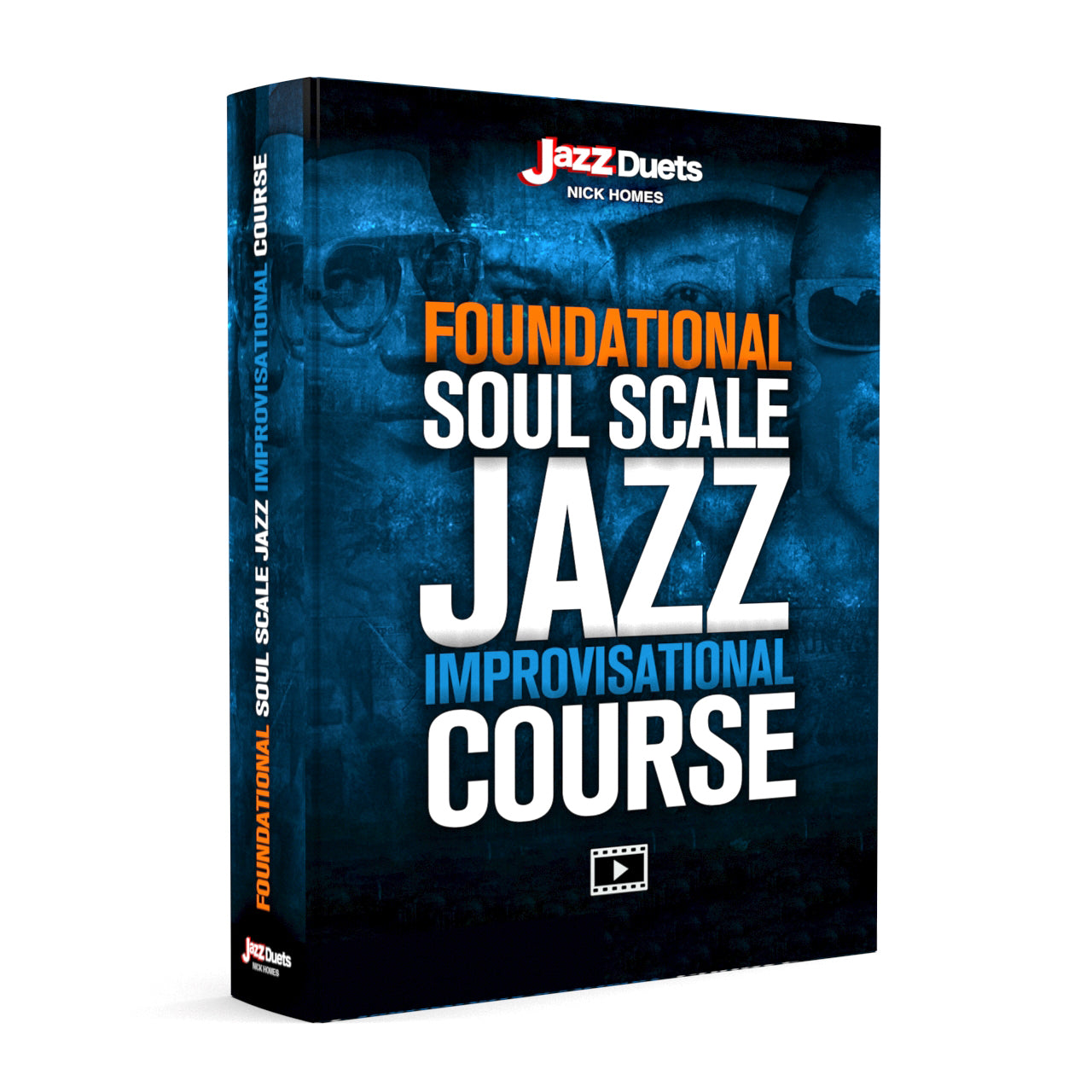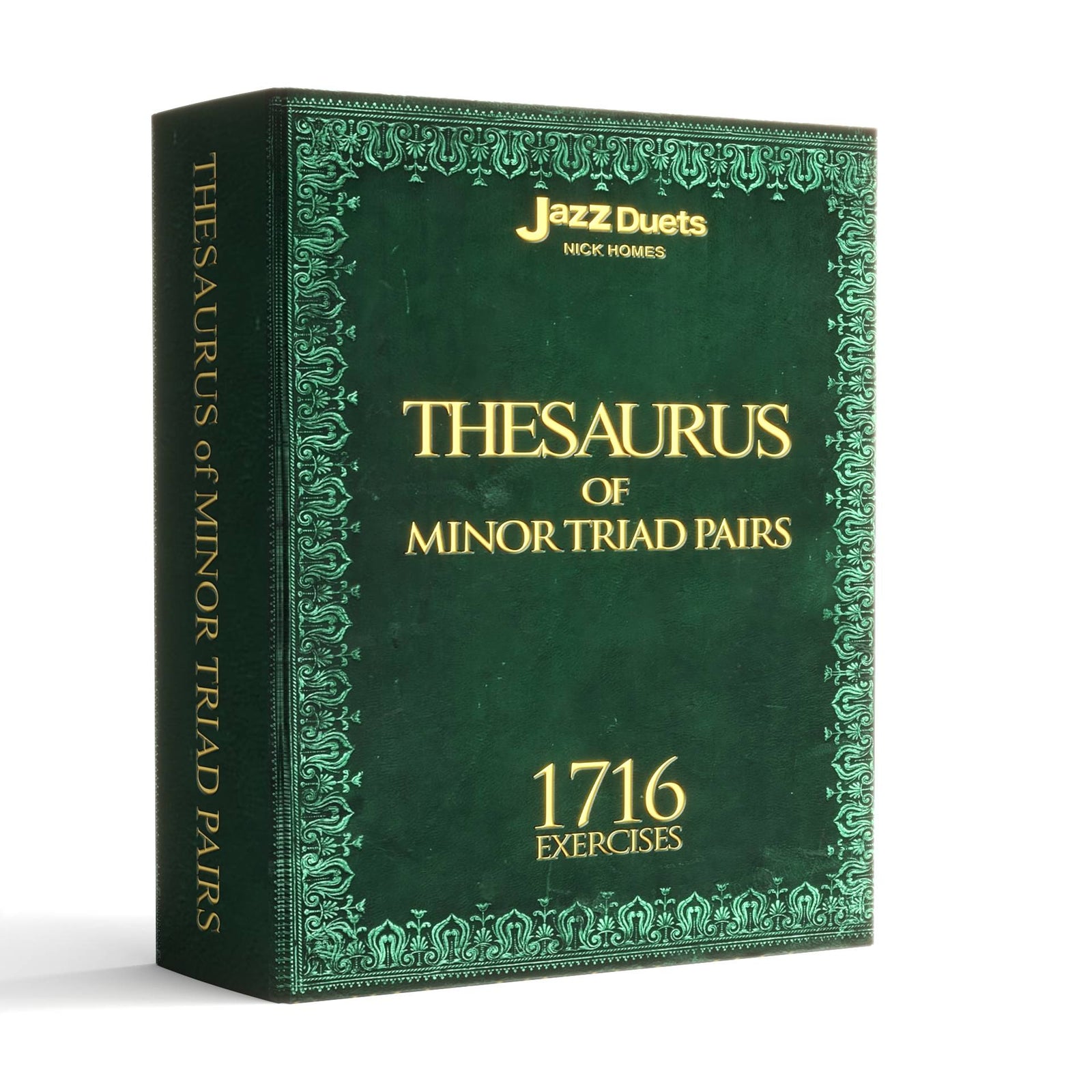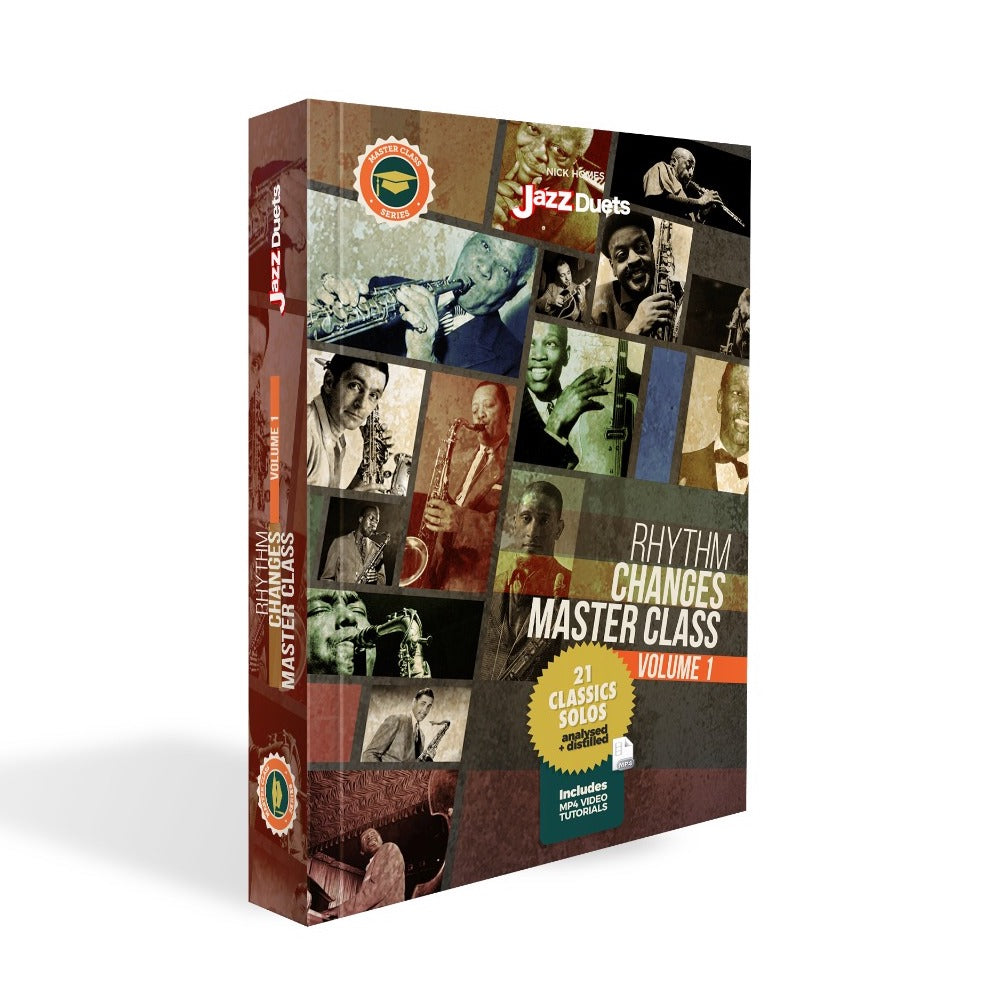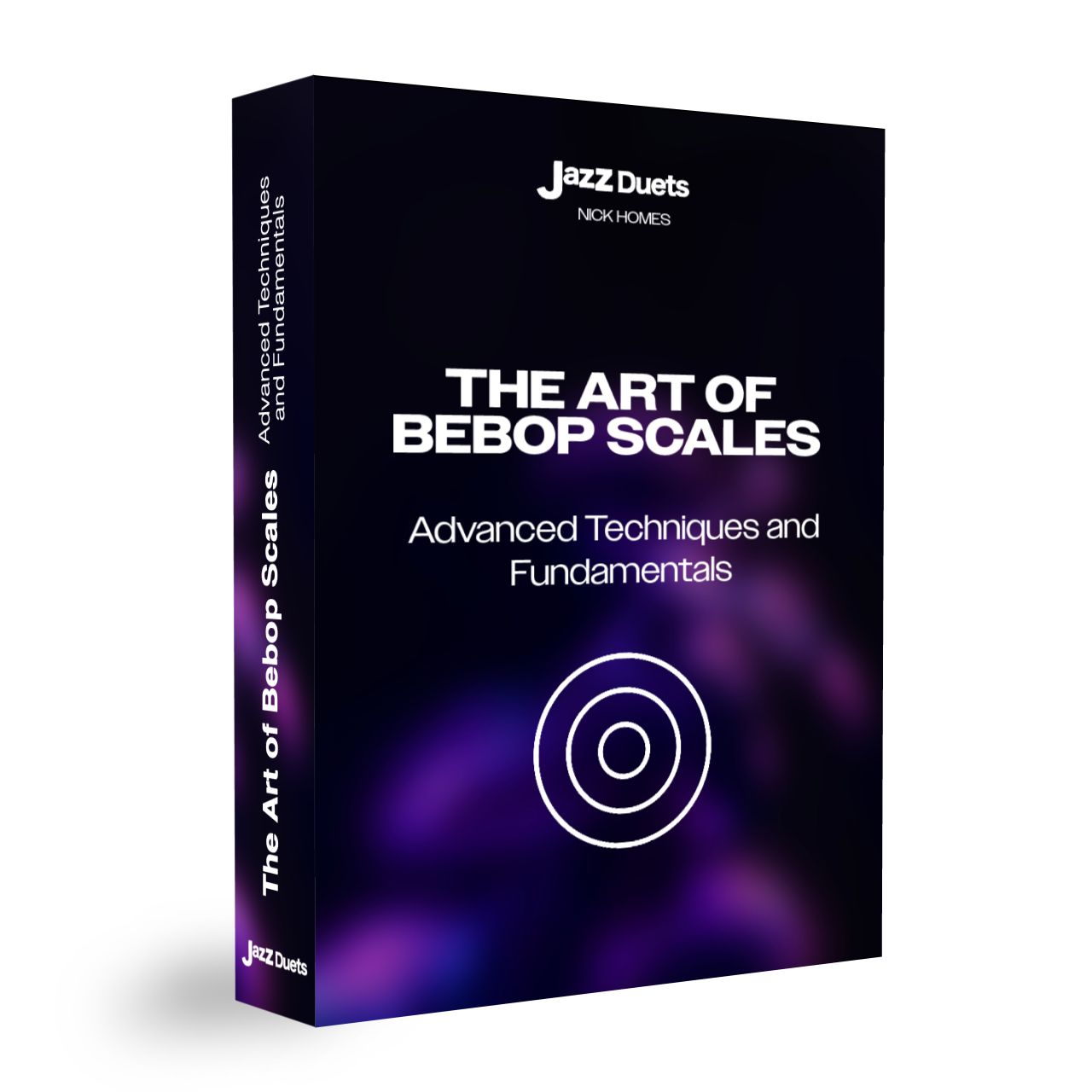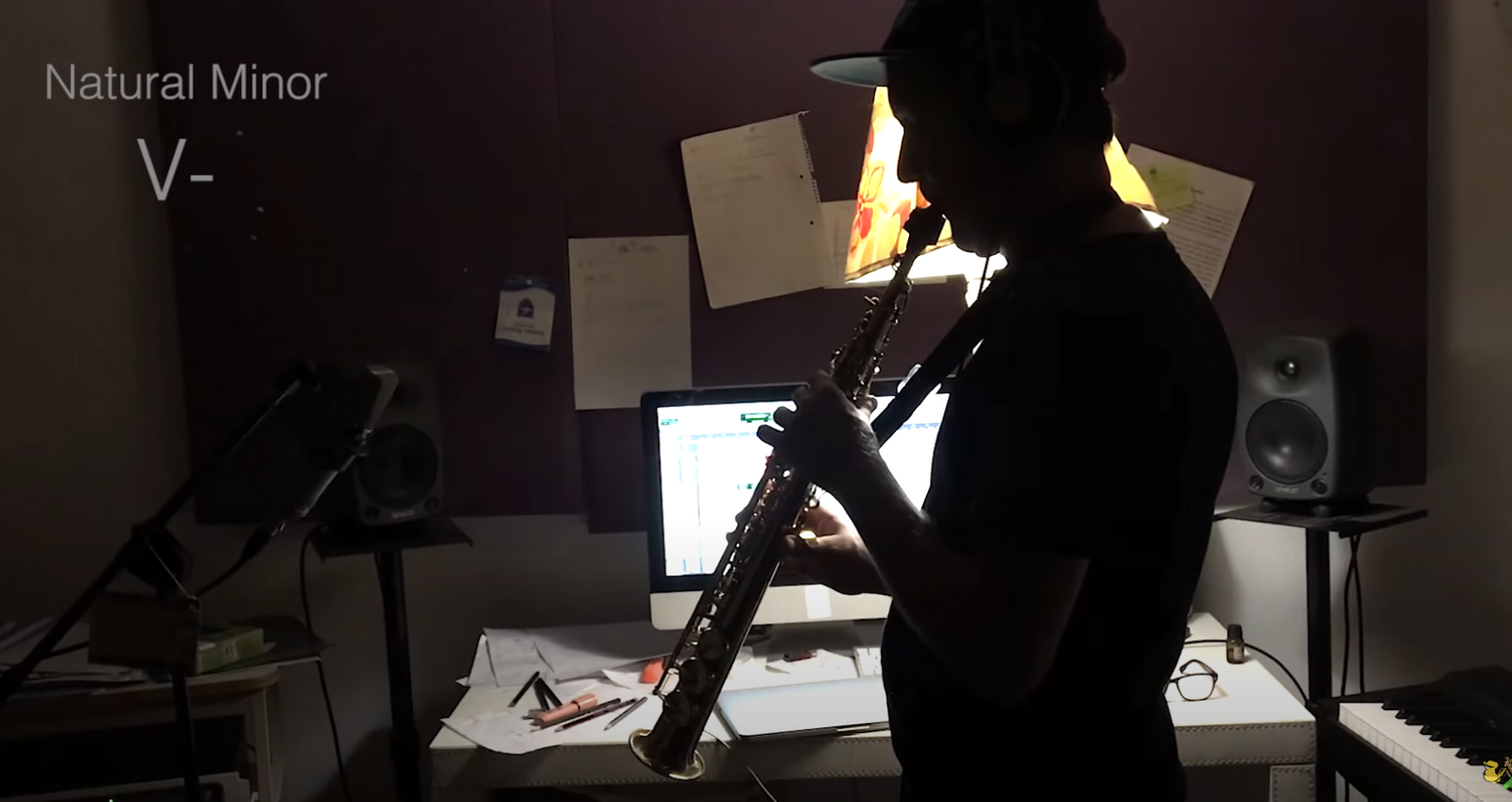For the student of improvisation the minor /major 3rd sound dichotomy is essential to know and love as it is arguably the most fundamental sound of Jazz and Blues. There is no arpeggio that is taught academically that contains both Major + Minor, that is until now. The BLUES ARPEGGIO offers a solution to this massive hole in music education.
Transcript:
Hi. Most people have heard of the idea that there is a missing link between man and apes. Jazz duets believes also there is a missing link between the major and minor arpeggios in music and the video you are watching seeks to offer at least some kind of remedy for this. Traditionally the music student is taught major or minor arpeggios as totally isolated concepts. The major arpeggio is happy sound and the minor, a sad one and that is it. Closed book. All you need to know sufficient to pass the exam, but wait a minute. What about the newcomer to music? Who was interested in the exotic sounds of jazz and blues? Where will he or she just starting out find these alluring, evocative sounds heard in the classics? The inquisitive student will be frustrated if they look for these colorful jazzy musical sounds in the major or regular minor as they are not there. I would argue that the two sound flavors of major and minor, even though essential to know are however just too limiting for people who are looking for the unusual and exotic sounds of jazz and blues. I humbly suggest another arpeggio could be practiced alongside the major minor from the very beginning which I called the blues arpeggio. Here it is in C you can see it contains both the major and minor thirds so it can be thought of as the two arpeggios sum together major and minor as well. In that way perhaps it is easier to remember personally I like to practice it like this with a minor third descending proceeding. The major third so it is not symmetrical here it is on the sacks in two octaves a bit faster. The juxtaposition of these two sound worlds if you like. The major and minor contrasted I would argue is perhaps one of the most fundamental elements or ingredients of the blues as well as the microtones between them. Here is the blues arpeggio around the cycle of fifths or fourths if you prefer played rubato as a warmup and here is a wider version that is also agreeable as a warmup[inaudible].Let's now hear this. See blues arpeggiated supported with some courts. Firstly, just C tried to C minor, try it. A strident sound that from major to minor but not very bluesy. Another way to harmonize this blues arpeggio would be the one chord to the four seven chord, C to F seven let's see what that sounds like.[inaudible] [inaudible], [inaudible] [inaudible].Let's now hear this blues arpeggio played on a blues, changing the arpeggio respectively with each chord. So on the sea we will play these notes[inaudible]on the F chord, these notes of that blues arpeggio and on the G chord play the G blues arpeggio. Okay, so now I'm going to noodle around on these notes and see what I can come up with. I think a terrifically comprehensive exercise is to play the blues arpeggio on the cycle starting on different degrees, but sticking to just the four notes of each successive of blues arpeggio. In his first example, I start playing the blues arpeggio from the root note on each successive chord. After I buy the upper Joe, I improvised something but stick solely with the blues arpeggio notes. Also in the exercises that follow, I vary where I start and stop the phrases, so I used to keep the exercises fun and alive. In the next example, I start on a route going down. You'll see some of the lines are anticipated, which adds to the proceedings. Now he starts on the flatten third and ascendguys, do you see what's happening on every chord? Now we start on the flattened third of the blues arpeggio and then improvise something to follow, so on C that is E flat. On F the flat third is a flat and on B flat that will be D flat. This is a bit religious and square. We are never going to play like this in real life. It will be robotic and soulless, but it forces you to play something you otherwise might not have come up with that you might even Dicknext, I start on the flattened third going down this time, but via the major third with just four notes available. I try to vary the rhythm and phrasing as much as possible to keep things alive. It's like making a meal with just four ingredients. A challenge. I would say. Next, we'll start on the major third of each chord. This time going up and down. Next up, we start the phrases on the fifth degree and to conclude the examples, the blues arpeggio around the cycle in a freer manner. Starting on the degree of my choice to the farm. A PDF of the exercises on the blues arpeggio is available@jazzduets.com for the price of a cup of coffee, the purchase of a which helps to support future content. Thanks for watching, Jess.

